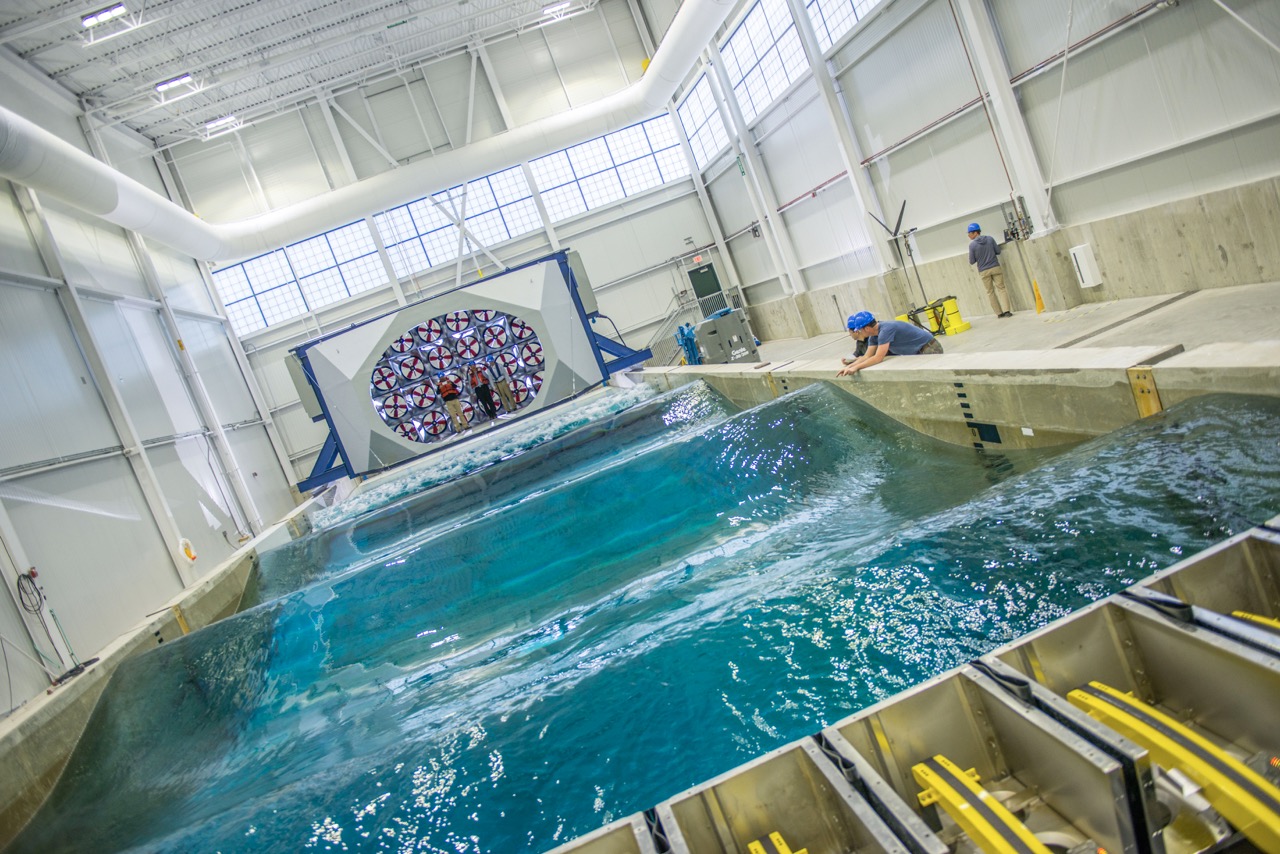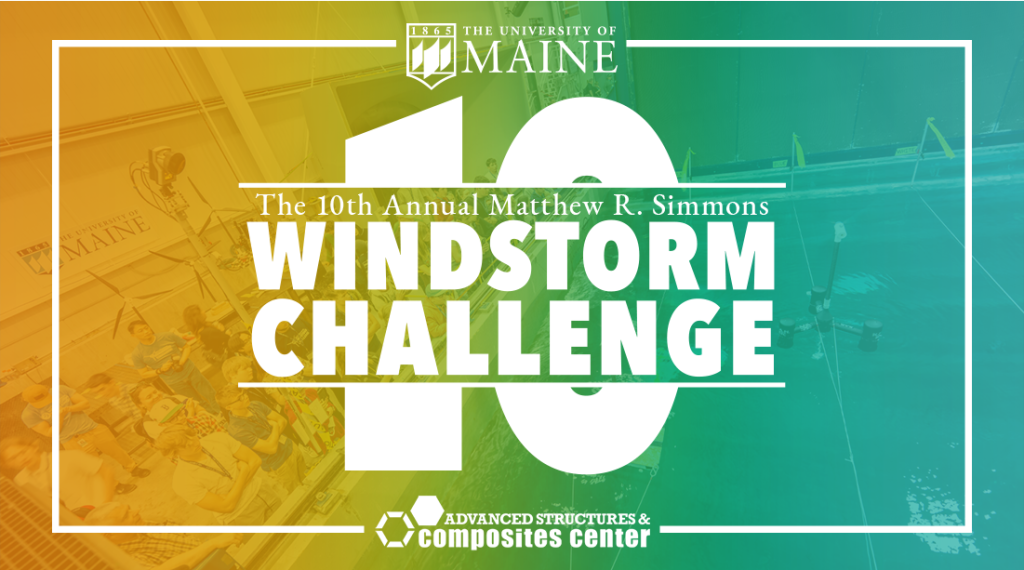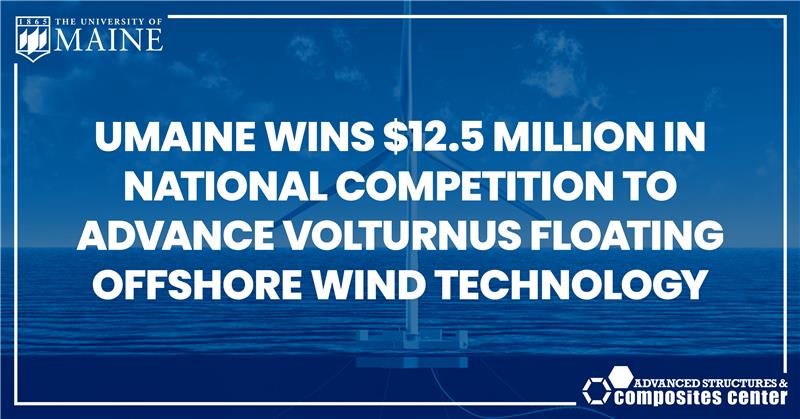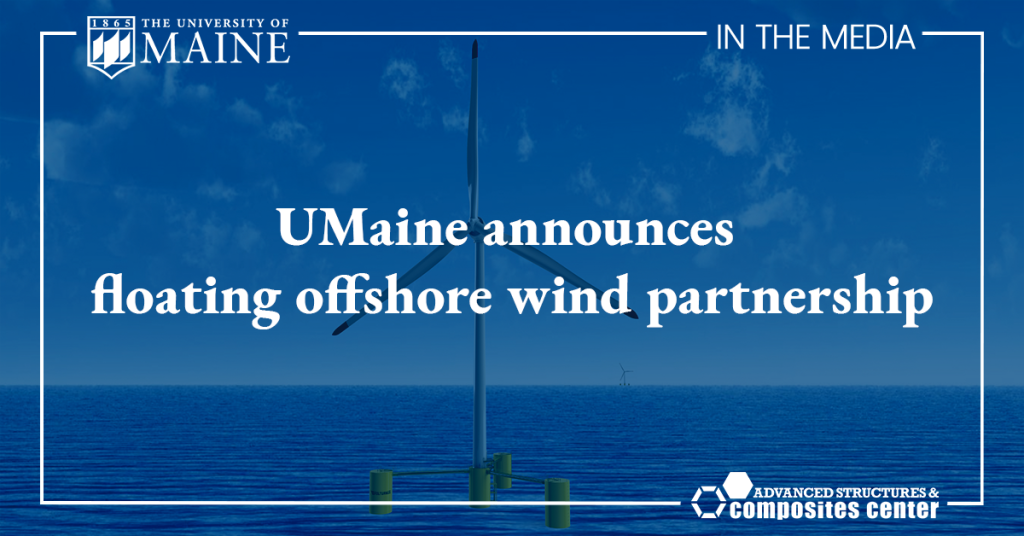Innovating our Oceans
The Ocean Engineering & Energy team is researching and developing innovative solutions to address climate change. Research is conducted in a state-of-the-art facility that includes the Alfond W2 (wind wave) Ocean Engineering Lab. The W2 is equipped with a high-performance rotatable wind machine over a multi-directional wave basin. The facility accurately simulates tow tests, variable water depths, and scaled wind and wave conditions that represent some of the worst storms possible anywhere on earth.
The Ocean Engineering & Energy team collaborates with businesses and other research institutions in developing products for the marine economy while offering hands-on training for students. These products include ocean energy devices such as semi-submersible platforms, marine hydrokinetic devices (wave energy converters, tidal energy, etc.); aquaculture technology; improved boat and ship hulls; waterfront infrastructure such as bridges, piers, docks, and port facilities; as well as systems to protect coastal cities from effects of erosion and extreme storms.





